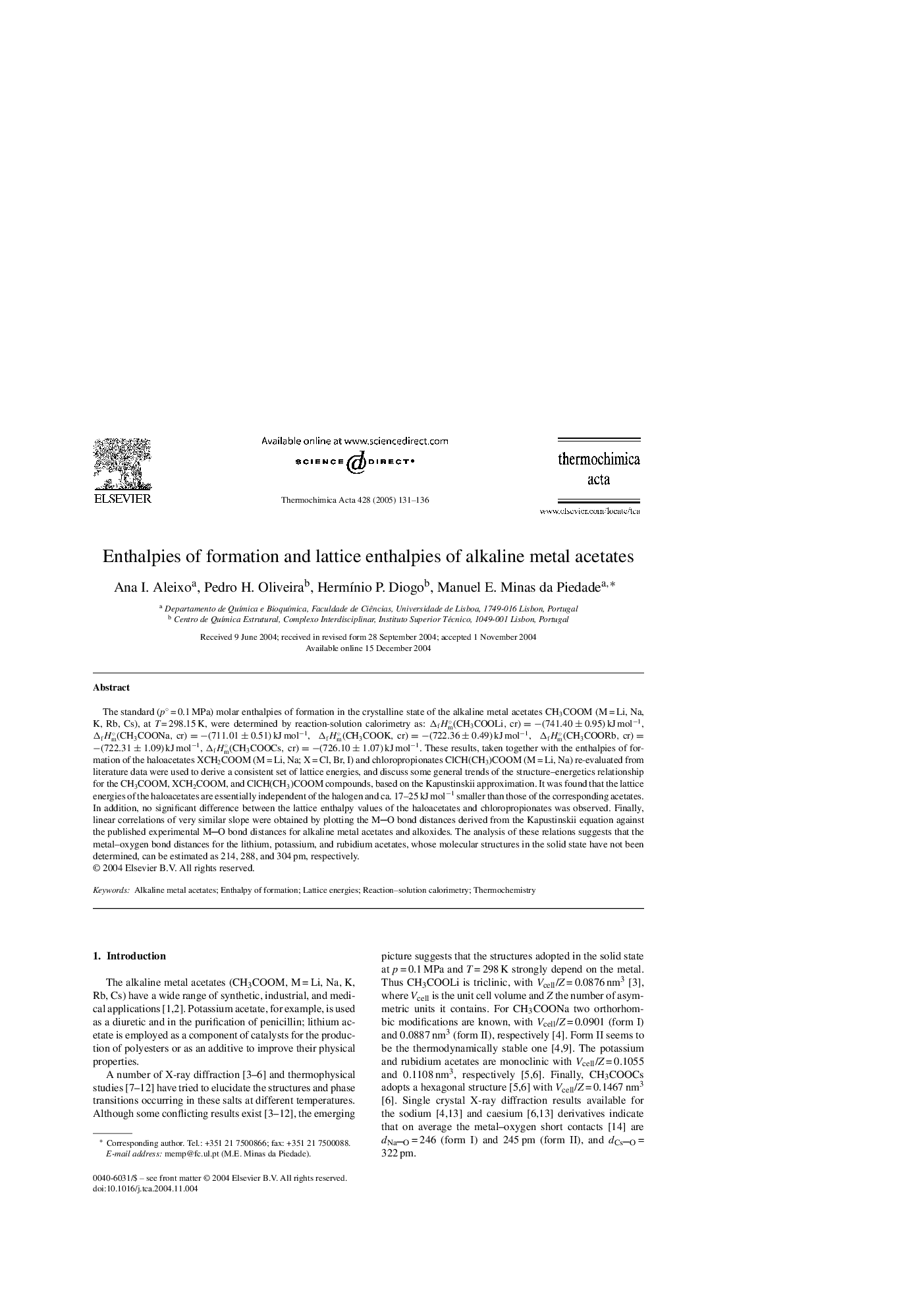| Article ID | Journal | Published Year | Pages | File Type |
|---|---|---|---|---|
| 9694178 | Thermochimica Acta | 2005 | 6 Pages |
Abstract
The standard (p° = 0.1 MPa) molar enthalpies of formation in the crystalline state of the alkaline metal acetates CH3COOM (M = Li, Na, K, Rb, Cs), at T = 298.15 K, were determined by reaction-solution calorimetry as: ÎfHm°(CH3COOLi,cr)=â(741.40±0.95) kJ molâ1, ÎfHm°(CH3COONa,cr)=â(711.01±0.51) kJ molâ1, ÎfHm°(CH3COOK,cr)=â(722.36±0.49) kJ molâ1, ÎfHm°(CH3COORb,cr)=â(722.31±1.09) kJ molâ1, ÎfHm°(CH3COOCs,cr)=â(726.10±1.07) kJ molâ1. These results, taken together with the enthalpies of formation of the haloacetates XCH2COOM (M = Li, Na; X = Cl, Br, I) and chloropropionates ClCH(CH3)COOM (M = Li, Na) re-evaluated from literature data were used to derive a consistent set of lattice energies, and discuss some general trends of the structure-energetics relationship for the CH3COOM, XCH2COOM, and ClCH(CH3)COOM compounds, based on the Kapustinskii approximation. It was found that the lattice energies of the haloacetates are essentially independent of the halogen and ca. 17-25 kJ molâ1 smaller than those of the corresponding acetates. In addition, no significant difference between the lattice enthalpy values of the haloacetates and chloropropionates was observed. Finally, linear correlations of very similar slope were obtained by plotting the MO bond distances derived from the Kapustinskii equation against the published experimental MO bond distances for alkaline metal acetates and alkoxides. The analysis of these relations suggests that the metal-oxygen bond distances for the lithium, potassium, and rubidium acetates, whose molecular structures in the solid state have not been determined, can be estimated as 214, 288, and 304 pm, respectively.
Related Topics
Physical Sciences and Engineering
Chemical Engineering
Fluid Flow and Transfer Processes
Authors
Ana I. Aleixo, Pedro H. Oliveira, HermÃnio P. Diogo, Manuel E. Minas da Piedade,
